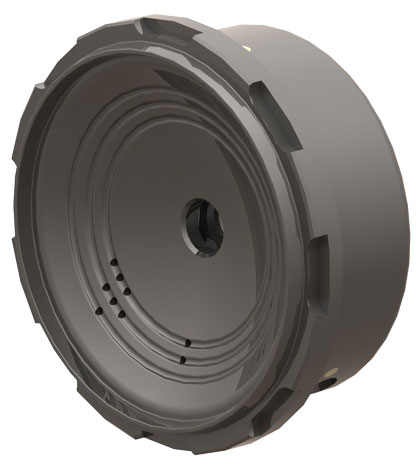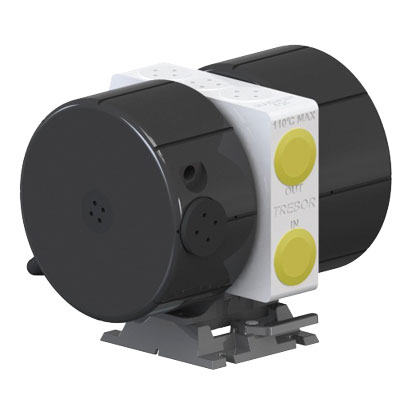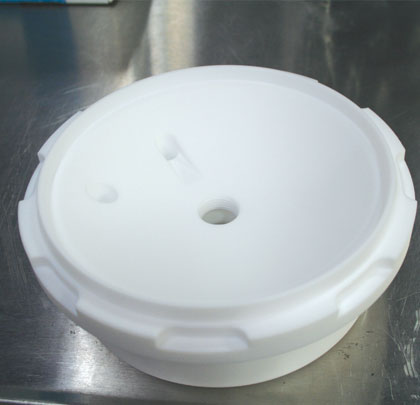For the chemical processing industry, the benefits of air-operated double diaphragm (AODD) pumps are well known. AODD pumps are, on the whole, the best choice for chemical engineers who seek a reliable and clean option for handling highly responsive or potentially hazardous fluids due to the pump’s absence of physical contact between moving mechanical components, like a piston or impeller, and the pumped liquid. Some manufacturers even increase the design’s inherent advantage by delivering models assembled in pure, or “clean room,” environments.
For example, Trebor’s pump engineers have been producing and testing their line of AODD pumps in clean room environments for years in order to better anticipate the changing chemical handling needs of their end users. Testing yields results, and results should lead to improvements. As Trebor’s team of engineers looked over their data, they devised a plan to overcome a combination of risk factors that had been a potential pitfall for AODD pumps, and the pumps’ vital diaphragms specifically, in the past. A relatively simple design change would yield significant adavantages.

MULTIPLE RISK FACTORS
Aggressive chemical environments, such as those with tetramethylammonium hydroxide (TMAH), pose certain risks to the integrity of the plastic AODD pumps used in the process. As the aggressiveness of the chemicals used increases, as well as the increasing temperatures, many diaphragms begin to crack thereby creating leaks in the process. One solution is designing a pump head that proactively diffuses the pressure of the chemicals on the diaphragm, which has been shown to significantly reduce diaphragm failures.
Several industries, such as semiconductor manufacturing, involve the use of specialized chemicals and processes unseen in common fabrication plants. The use of these chemicals and the need for ultra-high purity has driven the design and manufacture of chemically inert, plastic AODD pumps. Pump manufacturers use a variety of plastics in their pumps including polytetrafluoroethylene (PTFE), perfluoroalkoxy (PFA), and polypropylene (PP). These polymers can experience a diminished life due to several factors in the manufacturing process: the aggressive nature of the chemical being processed, the temperature of the chemical being processed, and the design of the pump head.
THE PERFECT STORM
The combination of those three elements creates the “perfect storm” for diaphragm failures. The diaphragm is repeatedly pressed against the head of the pump at high pressures, which causes the diaphragm to protrude into the air supply hole of the pump head. This typically occurs in settings with high inlet pressure or if the pump is allowed to dwell at the end of the stroke. The problem is exacerbated when the fluids are capable of embrittling PTFE, such as silicone etchants. The diaphragm then becomes prone to stamping at the location of the air supply hole. Eventually, the diaphragm ruptures at the stamp mark.
As seen in figure 1, the air supply hole is the uppermost hole shown in the photo. The design of this pump head is sufficient in most chemical applications, but in very aggressive applications the head design is as important to pump life as the diaphragm design. The air supply hole went from a single port to seven, as seen in figure 2. The redesigned pump head showed significant improvement in diaphragm life.

COOPERATION WITH END USERS
The solution to this problem is a pump head that allows sufficient pressures and temperatures without diminishing the life of the diaphragm. By placing radial indentations in the head at the same points of the holes, the diaphragm became less prone to stamping.
Trebor engineers were able to work directly with end users to test the redesigned pump head in aggressive environments and found that the new design significantly improved the performance and life of the diaphragm. The diaphragm was monitored monthly during tests and after eight months of testing, the diaphragms showed no signs of unusual wear.
AN EYE ON THE FUTURE
The implications for this redesigned pump head and its improved life will mean an expanded range of chemicals that can be successfully handled in different facilities with a single pump design. Furthermore, by extending the life cycle of the diaphragm itself, Trebor’s AODD pumps will not need replacing as soon as alternative pump designs. Fewer replacement costs and less specialization mean lower costs for facility managers.
By keeping one eye on test data and another on practical applications, Trebor’s engineers provide not only a success in the laboratory but also one for their end users—even for the most aggressive chemical handling applications. ■
_________________________________________________________________________
ABOUT THE AUTHOR
John Roach is a senior engineer with Trebor International of West Jordan, Utah, a business unit of IDEX Corporation. He can be reached at jroach@idexcorp.com. For more information, visit www.treborintl.com.
_________________________________________________________________________
MODERN PUMPING TODAY, March 2013
Did you enjoy this article?
Subscribe to the FREE Digital Edition of Modern Pumping Today Magazine!
![]()


